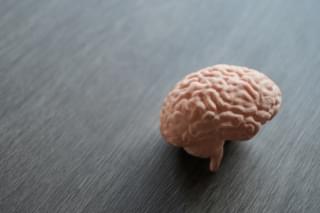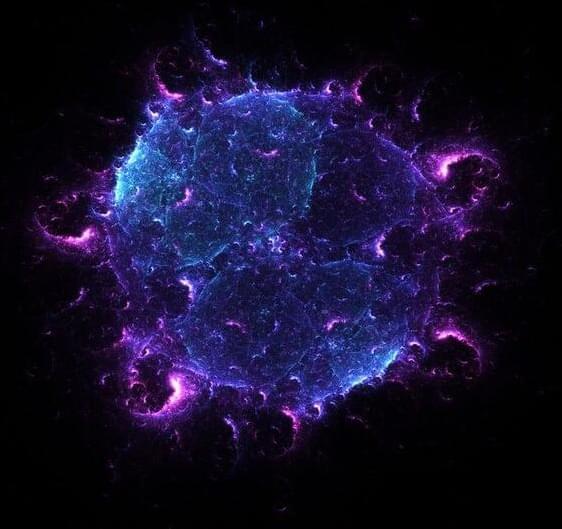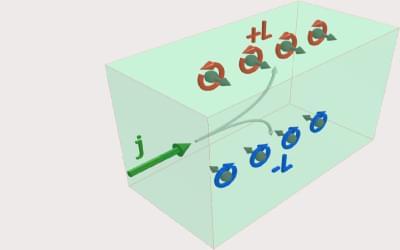“the predictions of the standard model of the universe appear to be at odds with some recent observations.”
Right now, it looks like the cosmology is at a tipping point.
“the predictions of the standard model of the universe appear to be at odds with some recent observations.”
Right now, it looks like the cosmology is at a tipping point.

China has announced the construction of a nuclear power plant that will be fuelled by liquid fuel based on molten thorium salt. The Shanghai Institute of Applied Physics (SINAP) has been engaged in research in this area since 2011 focusing on liquid fluoride-thorium reactors (LFTRs). The construction of a prototype of a thorium molten salt reactor (TMSR) with a capacity of 2 MW began in September 2018 and was reportedly completed in August 2021. China is seeking to get full intellectual property rights to this technology.
Now China plans to build the world’s first NPP based on molten salt in the Gobi desert. Construction will begin in 2025 with the aim of developing safer and more environmentally friendly nuclear energy. The reactor does not need water for cooling, since it uses liquid salt and carbon dioxide to transfer heat and generate electricity.
In 2022, SINAP received permission from the Ministry of Ecology and Environmental Protection to commission an experimental MTSR. This is the first nuclear molten salt reactor since the United States stopped its molten salt test reactor in 1969. The application for the operation of the experimental reactor was considered in China in June 2023, it was considered to be fully compliant with safety requirements.

The first statistically significant results are in: not only can Large Language Model (LLM) AIs generate new expert-level scientific research ideas, but their ideas are more original and exciting than the best of ours – as judged by human experts.
Recent breakthroughs in large language models (LLMs) have excited researchers about the potential to revolutionize scientific discovery, with models like ChatGPT and Anthropic’s Claude showing an ability to autonomously generate and validate new research ideas.
This, of course, was one of the many things most people assumed AIs could never take over from humans; the ability to generate new knowledge and make new scientific discoveries, as opposed to stitching together existing knowledge from their training data.

This is a U.S. General Services Administration Federal Government computer system that is “FOR OFFICIAL USE ONLY.” This system is subject to monitoring. Individuals found performing unauthorized activities are subject to disciplinary action including criminal prosecution.
This system contains Controlled Unclassified Information (CUI). All individuals viewing, reproducing or disposing of this information are required to protect it in accordance with 32 CFR Part 2002 and GSA Order CIO 2103.2 CUI Policy.

A new study has uncovered significant differences in how male and female mice process threats, even as they exhibit similar behavioural responses. The discovery suggests that including both male and female subjects in neuroscience research will lead to more accurate conclusions and ultimately better health outcomes. Understanding the influence of sex on brain function can help explain why males and females develop certain psychiatric disorders at different rates or with different symptoms, the researchers said. ‘Unless we thoughtfully and rigorously integrate sex into biomedical research, a huge amount of the population may be underserved by scientific knowledge,’ said McGill University Associate Professor and Canada Research Chair in Behavioural Neurogenomics Rosemary Bagot, who led the study. ‘Our work shows that sex is an important variable to consider, even if initial observations don’t necessarily show clear sex differences,” said Bagot. “If males and females are using different brain circuits to solve similar problems, they may be differently vulnerable to stress and respond differently to treatments.’ How brain circuits process threats and cues The study focused on two related brain circuits and their roles in processing information about threats and the cues that predict them. The researchers trained mice to recognize a sound that signalled a threat and another sound that meant safety. By observing brain activity, the team saw how communication between different brain areas processed these signals. Then, they temporarily turned off each brain connection to see how it affected the mice’s reactions, helping them understand how the brain handles threats. ‘We found that even though male and female mice respond similarly to threats, the brain circuits underlying these responses are not the same,’ Bagot said. For female mice, a connection between two specific brain areas (the medial prefrontal cortex and the nucleus accumbens) played a key role. The study found that in male mice, a different connection (between the ventral hippocampus and the nucleus accumbens) was more important for handling the same situation. It was previously assumed that similar behavior meant similar brain function. Now, the researchers are exploring how sex impacts brain circuits in processing threats, focusing on the role of sex hormones and different learning strategies. This research is supported by funding from CIHR. About the study Sex-biased neural encoding of threat discrimination in nucleus accumbens afferents drives suppression of reward behavior by Jessie Muir, Eshaan Iyer et al., was published in Nature Neuroscience.
One of the drawbacks of fitness trackers and other wearable devices is that their batteries eventually run out of juice. But what if in the future, wearable technology could use body heat to power itself?
UW researchers have developed a flexible, durable electronic prototype that can harvest energy from body heat and turn it into electricity that can be used to power small electronics, such as batteries, sensors or LEDs. This device is also resilient — it still functions even after being pierced several times and then stretched 2,000 times.
The team detailed these prototypes in a paper published in Advanced Materials (“3D Soft Architectures for Stretchable Thermoelectric Wearables with Electrical Self-Healing and Damage Tolerance”).

If you had a flashlight with you and directed it at a blank wall you would expect it to give a straight line projection however you will find the lit up wall forming rings where the flash light is pointing at. This occurs due to interference and constructive as the light wave forms combine or destructively when the waves structure is out of phase. This occurs when the two waves are in phase with each other thereby producing constructive interference which brought about a bright region. When they do not occur, destructive interference is experienced thus causing the light to fade. Mathematically if S and N waves are 1,800 out of phase the interference actually nulls the signal completely.
Although, light is the most familiar interference, the concept of Interference is not restricted to it. Electrons can also interfere when they have juxtaposable different energy, this leads to the formation of the ‘‘dark electrons’’, electrons in ‘‘dark state’’ not visible by spectroscopic equipment.
Until recently, it was believed that such dark electrons can not be present in solids materials. The problem was that in the solid matter electrons are packed very closely together and thus it was thought to be virtually impossible to reach such ‘perfectly different energies’. Still, the research work conducted by a team from South Korea has revealed that these dark states do exist in condensed matter. This finding, published in Nature Physics can change how quantum physics is perceived.
A team of roboticists at the German Aerospace Center’s Institute of Robotics and Mechatronics finds that combining traditional internal force-torque sensors with machine-learning algorithms can give robots a new way to sense touch.
In their study published in the journal Science Robotics, the group took an entirely new approach to give robots a sense of touch that does not involve artificial skin.
For living creatures, touch is a two-way street; when you touch something, you feel its texture, temperature and other features. But you can also be touched, as when someone or something else comes in contact with a part of your body. In this new study, the research team found a way to emulate the latter type of touch in a robot by combining internal force-torque sensors with a machine-learning algorithm.


Orbital currents are the lesser-known cousins of spin currents. Both involve an alignment of angular momentum. But spin currents are carried by spin-polarized electrons, while orbital currents are carried by electrons in orbitals having the same angular momentum. Like their spin counterparts, orbital currents could be useful for transmitting information in so-called orbitronic devices, but researchers had expected that these currents would not travel well across material interfaces. Now Igor Lyalin and Roland Kawakami from Ohio State University have measured the flow of orbital currents across selected materials placed in multilayer structures. They find, surprisingly, that the transport of orbital currents is as good or better than the transport of spin currents for most of the sampled materials.
Orbital currents can be generated via the so-called orbital Hall effect—a surface magnetization effect that was predicted 20 years ago but directly detected only in 2023 (see Synopsis: Detection of the Orbital Hall Effect). Interest in orbital currents is growing, as they could be more effective than spin currents at switching the orientation of magnetic layers in data-storage devices.
To study orbital current transport, Lyalin and Kawakami fabricated structures consisting of chromium and nickel layers, separated by a thin spacer. For the spacer material, they tested nonmagnetic metals, ferromagnetic metals, and antiferromagnetic insulators. The researchers generated an orbital current by applying a voltage to the chromium layer, and they measured how much of this current flowed through the structures by observing a magnetization change in the nickel. They found that 12 of the 15 spacer materials transported orbital currents more efficiently than spin currents—a result that could be good news for developing future orbitronic devices, Kawakami says.